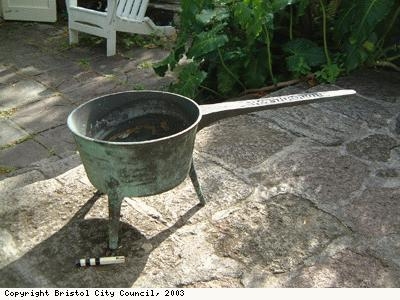How Slavery Developed
Examples of cargoes
The slave ships leaving Bristol for West Africa carried many different items as part of the cargo for trading with the West African traders. Some of these trade goods were made locally in Bristol and the surrounding areas: brass ‘manillas’ are one such example. Other goods came from further away. For example, cloth from India would have been bought from London merchants who were trading with India. Tobacco, rum, brandy, jugs, beads, trunks and some of the cloth were to be used for buying rice for food during the journey across the Atlantic Ocean. The ‘fine’ beads were for trading for gold and ivory.
Listed below are some of the items which were part of the cargo for the Bristol slave ship the Africa, in 1774. The ship’s owners kept an accounts book which tells us about the voyage:
- Value £4648 1s 1d
- India and Manchester cloth,
- brass dishes
- hats and waistcoats
- brandy and rum from Jamaica
- iron bars and pots
- guns, gun flints and gunpowder
- copper rods
- manillas
- beads
- lead bars and shot
Cargo of the ship the Africa on another voyage in 1776:
- Value £3072 5s. 11d.
- India and Manchester cloth, value £1321
- brass copper rods
- brandy and rum
- pewter flagons and basins
- brass dishes
- hats and caps
- pipes and tobacco
- glasses, decanters, stoneware jugs and bottles
- beads
- guns, gun flints and gunpowder
- glass lamps
- cutlery
- razors
- pocket knives
- fish hooks
- snuff boxes, rings
- waistcoats and jackets
- trunks
- 1 Wilton carpet

 Bristol’s merchants
Bristol’s merchants Examples of cargoes
Examples of cargoes Abolition
Abolition Rebellion
Rebellion Sugar Plantations
Sugar Plantations African heritage
African heritage The voyage
The voyage ‘Buying’ the slaves
‘Buying’ the slaves Bristol ships go to Africa
Bristol ships go to Africa Goods to trade
Goods to trade

